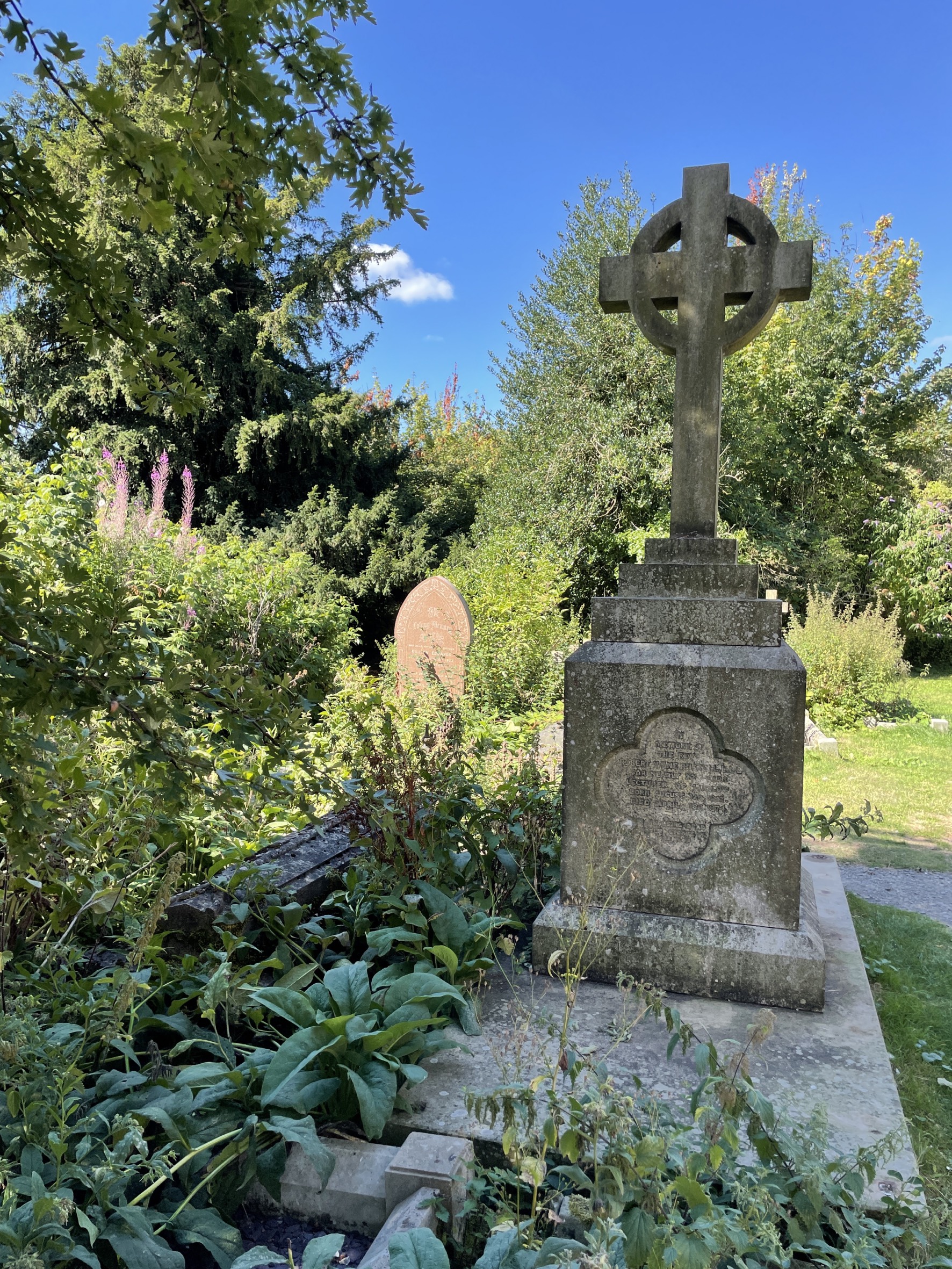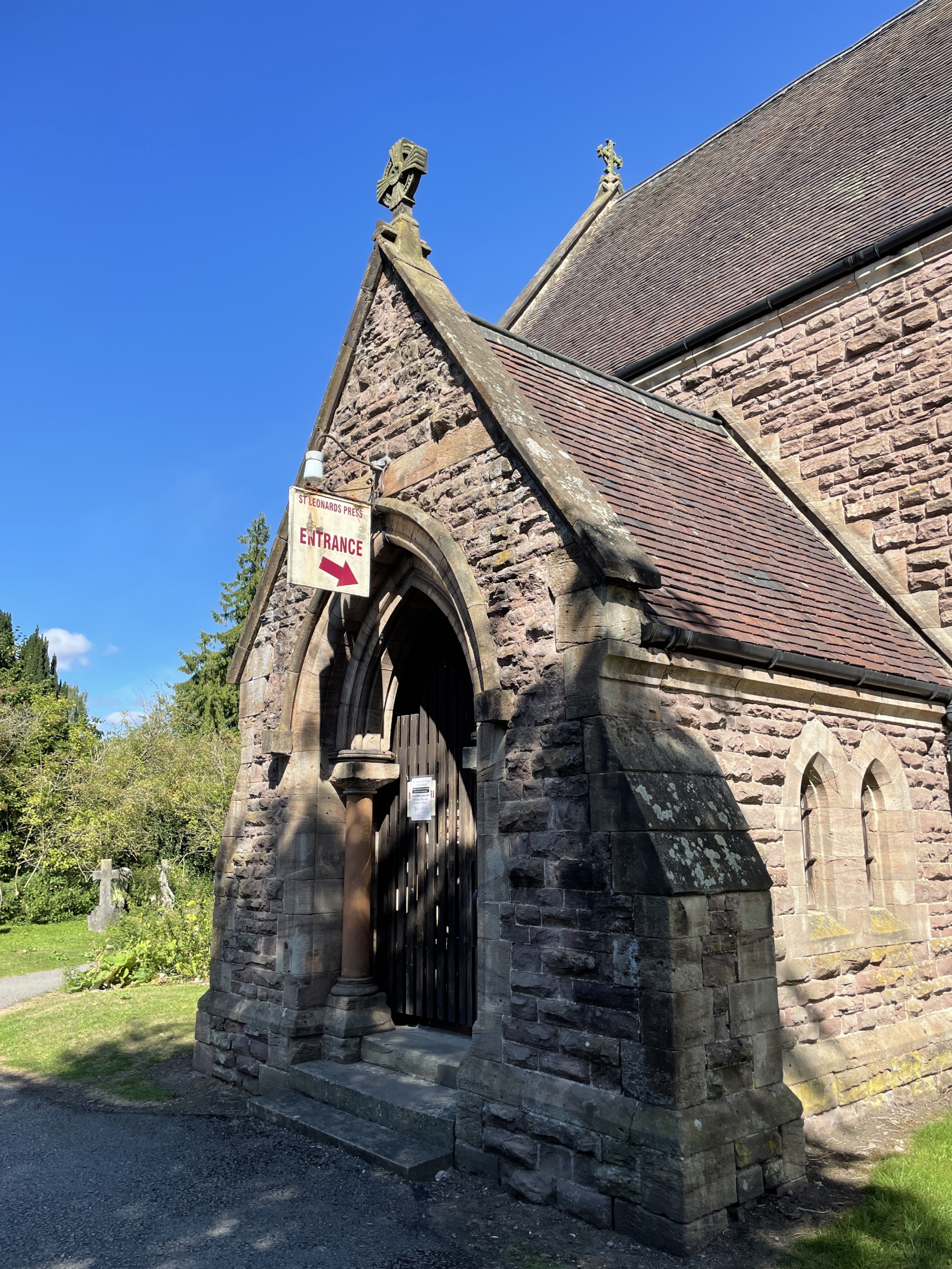St Leonards, Ludlow
The Churchyard, is packed with history and is a popular pedestrian link between Corve Street and the Linney, and is a haven for flora and fauna, and a great place to simply sit awhile.
The entrance gateway dated 1824 features an arch, wall and a pair of entrance gates is a Grade II listed monument, and recently underwent extensive repair and rennovation to ensure it's enjoyment for future generations. Look closely and you will see an inscription that commemorates its gift to the parish of a burial ground by the Clive family in 1824 when it was clear that the old medieval churchyard was completely full. St Leonard's at first occupied just over an acre, and space finally ran out during the First Word War - at which point the new Borough cemetary on Henley Road was opened and burial continued there.

The site however is much older, and has a long and distinguished history that can be traced in detail...
HOUSE OF CARMELITE FRIARS
The Carmelites were the last of the four chief orders of friars to reach Shropshire. They were established at Ludlow in 1350 by Sir Laurence of Ludlow grandson of the great wool merchant of Edward I's reign and lord of Stokesay Castle, who then obtained licence to grant a messuage in Ludlow to the Carmelite order to build a habitation for the friars there.Building began at once: ordinations of Carmelite friars from Ludlow begin in December 1352 and in 1358 the prior and three brethren of the house were licensed to hear confessions in the diocese of Hereford. When Laurence died in November 1353 the building of the church was sufficiently far advanced for his body to be buried in the sanctuary, though later evidence suggests that the church was still far from complete.
The convent stood at the northern end of the suburb outside Corvegate on a site later occupied by the cemetery of St. Leonard's church. It probably adjoined the medieval chapel of St. Leonard, maintained by the Hospitallers of Dinmore; Laurence of Ludlow had held this site from them and the Carmelites continued to pay a rent of 5s. to the preceptory of Dinmore until the Dissolution. Building apparently progressed slowly after the founder's death.
A will of 1381, whereby William Pope of Ludlow left 20s. for the building of the 'new church of the Carmelite brethren in Ludlow' implies that it was still incomplete. In 1399 James Burley left £4 towards the building of a new chapel in the Carmelite church, to which the bones of members of his family buried there might be transferred. Early in the 15th century the church was either greatly enlarged or completely rebuilt; a papal indulgence of 1420 granted remission of penance to those who should visit and give alms on certain feasts for the fabric of the church, which had lately begun to be built.
A note in a Hereford bishop's register attributed the building of the church to Bishop Robert Mascall, himself a Carmelite, who died in 1416; he was perhaps responsible for the choir and presbytery. The house was sizeable by this time; a provincial chapter met at Ludlow in 1416. The completed church was, in the words of Leland, who saw it just after the suppression, a 'fair and costly thing' with the spacious proportions of so many friars' churches; at that time it had three bells in its steeple and a choir 'well stalled round about.'

The Carmelites occupied this area until their supression by Henry VIII in 1536, when the friary buildings were subsequently sold and demolished. The remains have been part excavated, and were sited under and to the north of the present chapel. This Vioctrian building, formerly a chapel of rest was designed by George Gilbert Scott and was openined in 1871; it is now in private hands and is used as commercial printing premises.
The burial ground contains some 1400 gravestones, one of which was recently discovered and recorded during the installation of new interpretation boards; dated from 1871 and commemorating an M Green.
The area is maintained by a working group; The Friends of St Leonard’s Churchyard which meets twice a year to help to maintain this very special space for the free enjoyment of all Ludlow’s residents and visitors. The friends also care with great respect for two War Graves nestled amongst the other graves.
This historic churchyard environment is held in much affection by the people of Ludlow and continues to offer new discoveries and surprises and is well worth a wander when visiting Ludlow.
Published by Ludlow Guide on
More Articles

Love Ludlow Loyalty Card: Participating Businesses
Ludlow has it's very own 'Love Ludlow' loyalty card, where you get rewarded for being cool, by shopping…

Our Just-For-Fun Treasure Hunt
Fancy a short circuit round lovely Ludlow, taking in some of the most famous sights in the town, with…

Walkers Are Welcome in Ludlow
Ludlow has some great walks, suitable for all abilities and we are a great jumping off point for some…
